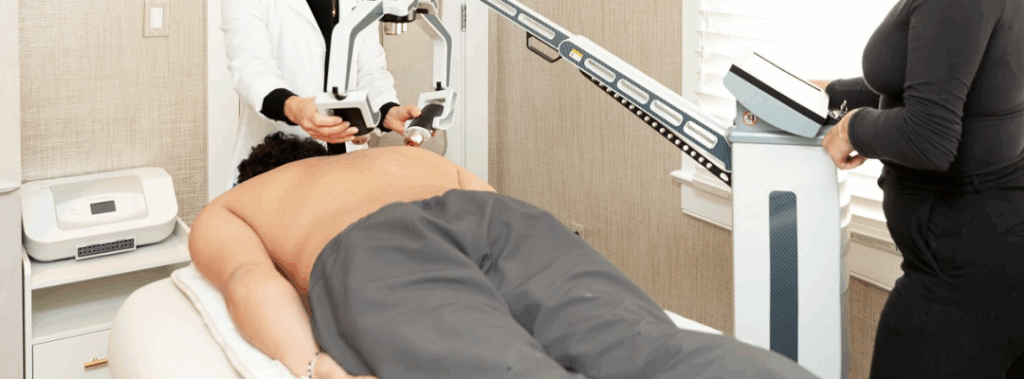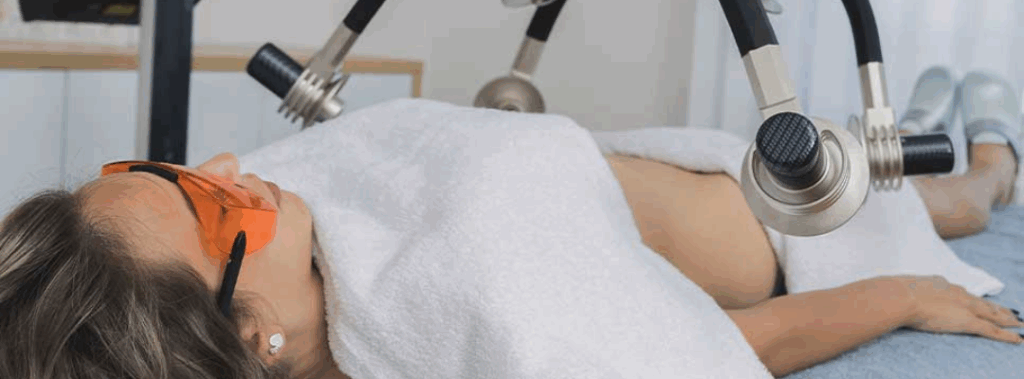
6-Minute Read
Lipid metabolism is a crucial process that supports healthy body weight and blood sugar management and reduces the risk of serious medical issues like cardiovascular disease, diabetes, and obesity.
Related: Why Is Adenosine Triphosphate (ATP) Important to Laser Light Therapy?
Patients can make better lifestyle choices that benefit their overall health when they understand the basics of lipid metabolism. This article will cover that information and be a helpful resource for your practice in providing techniques to support the metabolism of lipids.
Visceral Fat and Adipose Tissue
When it comes to body fat composition, there are two primary types: visceral fat, which is more likely to raise your patient’s risk for serious medical issues; and adipose tissue, which plays a critical role in managing systemic energy homeostasis by acting as a caloric reservoir.

Understanding the difference between visceral fat and adipose tissue is crucial for managing your patient’s health risks.
Visceral fat surrounds and permeates internal organs like the heart, liver, intestines and other important structures. Studies show that having too much visceral fat increases a person’s risk of developing metabolic syndrome (a cluster of conditions that increase their risk of diabetes, heart disease, and stroke).
Related: How Men and Women Store Fat Differently
Adipose tissue is found under the skin as subcutaneous fat. It is also located around the organs in certain areas of the body. In men, it tends to collect around their abdomen while in women, it accumulates around their hips and thighs. This type of fat helps insulate the body, store energy, and monitor hormones that regulate appetite.
Tip! To summarize for a patient: There are two types of body fat. Visceral fat can increase the risk of medical problems, while adipose tissue helps with energy balance.
Belly Fat Metabolism
In terms of metabolism, visceral fat is more difficult to break down than subcutaneous fat. When we talk about belly fat management, it’s important to note that the location of the fat impacts the metabolic process. Visceral fat is associated with increased insulin resistance, higher levels of triglycerides, and other biomarkers that increase a person’s risk for cardiovascular and metabolic diseases.

Low Level Laser Therapy (LLLT) can help support lipid metabolism and reduce visceral fat, as demonstrated in clinical studies, making it a promising option for managing belly fat.
To support the metabolism of lipids and visceral fat, Erchonia’s low level laser therapy (LLLT) has been clinically proven to help patients gain better control over their body composition. This high-tech approach works by targeting subcutaneous fat cells with a low-level laser that elevates cellular metabolism and encourages the breakdown of lipids.
Tip! Consider Erchonia’s Emerald Laser for an effective, non-invasive full body fat loss treatment with FDA Market Clearance, no downtime, and an average circumference loss of 5.99″, improving your patients’ outcomes.
This is a non-invasive treatment that has become increasingly popular for managing visceral and subcutaneous fat.
It works by using light energy to target localized fatty deposits and stimulating lipolysis, which breaks down triglycerides and other fats into free fatty acids for energy.
This process effectively reduces the amount of fat stored in the body, including common problem areas such as the belly, chest, and abdomen.
Related: [Free eBook Download] Not All Light is the Same in Low-Level Laser Therapy
LLLT can benefit both men and women, despite differences in fat distribution attributed to hormonal differences. By understanding the science behind this treatment, patients can make informed decisions about their health and consider non-invasive options for managing excess fat.
Explaining How Low Level Laser Therapy Activates Lipolysis
Explaining the science of LLLT and how it activates lipolysis in an engaging way is key to helping patients understand how this treatment works.

LLLT simplifies the complex process of breaking down fat by stimulating subcutaneous fat cells with a low-level laser, helping patients achieve their desired body composition goals.
When describing lipolysis, start by explaining what fats are made of – triglycerides, fatty acids, and glycerol – and how they’re broken down during the process. To simplify, you can emphasize three things for them:
- Low level laser therapy attracts fat cells and heats them up, which initiates fat breakdown.
- The heat helps break down triglycerides into fatty acids and glycerol, which is then absorbed by the bloodstream as energy.
- This process continues until excess fat deposits are depleted from the targeted areas.
The good news is that both subcutaneous and visceral fat can be reduced through LLLT treatments. The laser energy reduces excess fat deposits and helps improve metabolic health. By understanding the science behind it, patients can make informed decisions about their own health and consider this non-invasive option for managing excess fat.
Empower Patients with Knowledge About Managing Body Fat
Erchonia’s low level laser therapy (LLLT) offers a non-invasive solution for reducing body fat and improving metabolic health. This approach breaks down triglycerides into fatty acids, which the body can use for energy, resulting in a reduction of both visceral and subcutaneous fat deposits.
LLLT is a popular option for individuals seeking an effective way to manage excess fat storage without invasive procedures. By understanding the complex processes of how the body stores and metabolizes fat, individuals can make informed decisions about their health and consider LLLT as a viable option for managing unwanted body composition changes. With the help of healthcare professionals, patients can achieve their desired body composition and improve their overall health and well-being.
Not All Light is the Same [Free eBook Download]
Discover the benefits of Low-Level Laser Therapy (3LT®) by Erchonia, a world leader in the field of 3LT® technology. Learn how 3LT® can help reduce the need for prescription opioids for chronic low back pain, the science behind 3LT® and the difference between visible lasers and infrared lasers.
Related: Red Light Therapy: Dispelling Laser Myths with Basic Photochemistry
Sources:
https://pubmed.ncbi.nlm.nih.gov/20393809/



